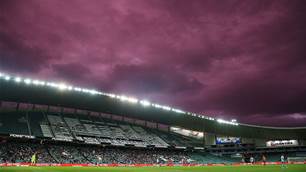As Socceroos fans don the polar-fleece and look towards another World Cup dawn, we cast our mind back to 2014. Less has changed than you might have thought…
The 2018 World Cup was meant to be Ange Postecoglou's judgement day.
2014’s tournament slammed down two markers for the next four years to be judged on – Australia wanted squad regeneration and the birth of a new footballing ideology.
So, given that the 2014 World Cup squad is largely acknowledged as a young, inexperienced side gaining crucial experience, how is it that four years later, only six of Bert van Marwijk’s 23-man team have prior World Cup experience?
What went wrong?
The Socceroos now face a mirror image of 2014 – another young, fresh-faced squad ready to build for the future.
Postecoglou’s resignation may have denied us the final opportunity to assess our tactical development, but we can still summarise how Ange’s 2014 World Cup squad matriculated into the Socceroos we have today.
These are the final winners and losers from the Postecoglou era.
WINNERS
Massimo Luongo –
As QPR’s reigning Fans’ Player of the Year, 25-year-old Luongo is one of the success stories from Ange’s reign.
Although he didn’t appear at the 2014 World Cup, his technical ability and squad experience at three major tournaments are set to make him one of van Marwijk’s key players in Russia and a Socceroos stalwart for years to come.
Mat Ryan –
Ryan arguably boasts the most successful cycle of any of Ange’s 2014 World Cup team.
Postecoglou admitted his choice to play the inexperienced goalkeeper in 2014 possibly “cost us points”, but off the back of a move to Valencia and a terrific season in the Premier League for Brighton, this was the type of regeneration Aussie fans were hoping for.
Mile Jedinak –
Postecoglou’s decision to award the captaincy to then-30 year old Mile Jedinak was a blessing for the Socceroos. His experienced leadership has proved invaluable throughout World Cup qualification, with the midfielder’s 15 goals rendering him the second highest goalscorer of Ange’s tenure.
His four years at club level for Crystal Palace and Aston Villa have largely replicated this success. How Jedi fits into van Marwijk’s set up in Russia, however, remains to be seen.
Tim Cahill –
The 2014 World Cup was the rebirth of Tim Cahill, with the Aussie doubling both his appearance and goal tallies from the previous two years between 2014 and 2015.
Although Cahill’s age has largely prevented a similar success story at club level, Postecoglou’s ability to get the best out of Timmy is a key factor in the wider Australian public’s infatuation with the striker today.
Related Articles
.jpeg&h=172&w=306&c=1&s=1)
Spurs assistant Mile Jedinak reveals coaching future

Postecoglou filled with optimism as Spurs thump Everton













